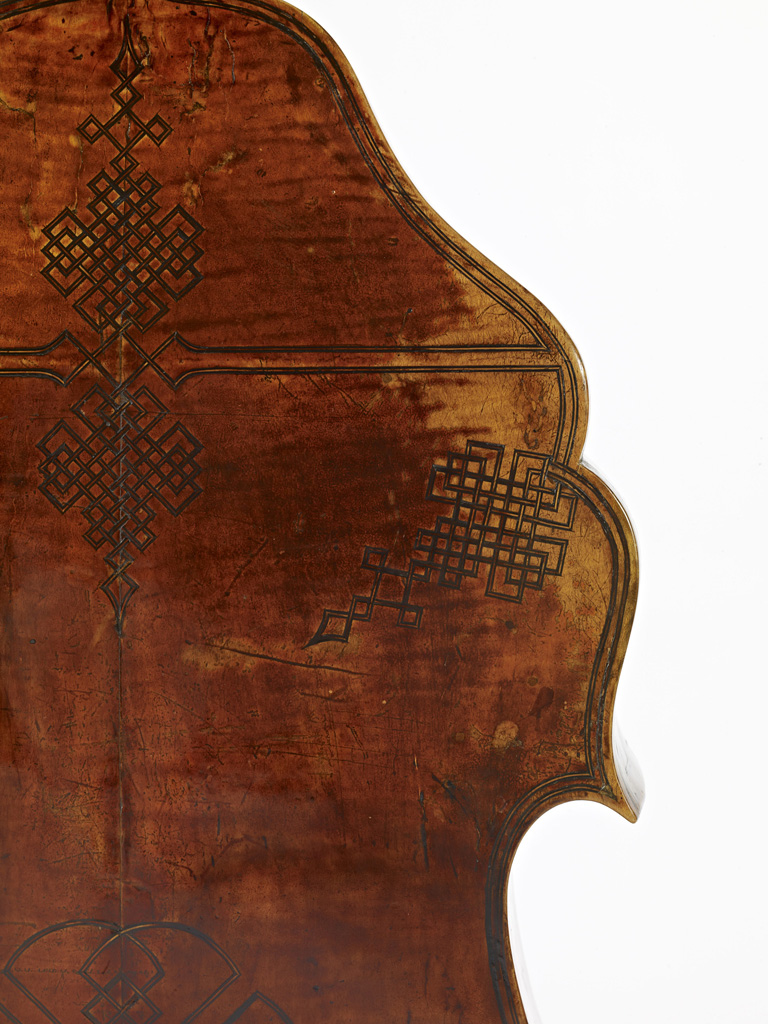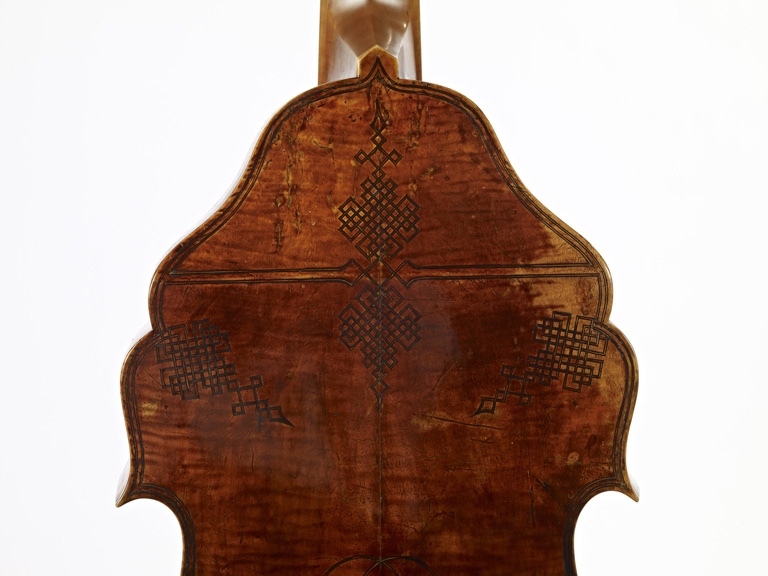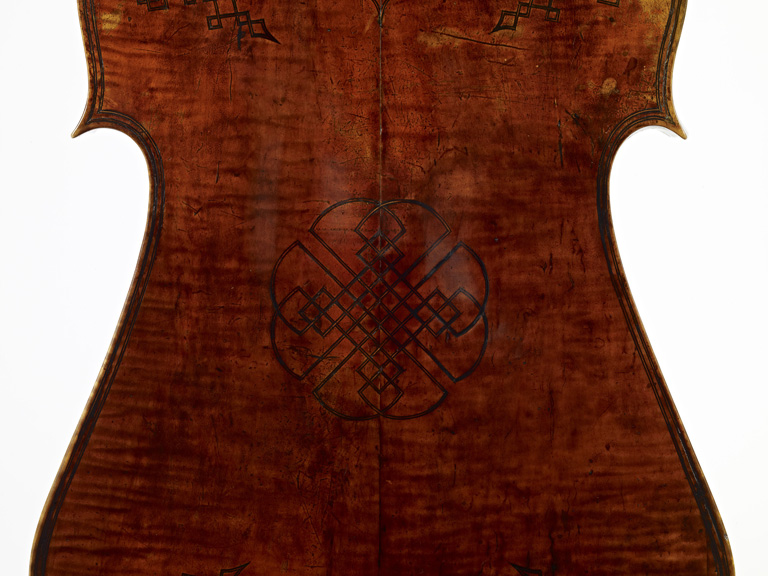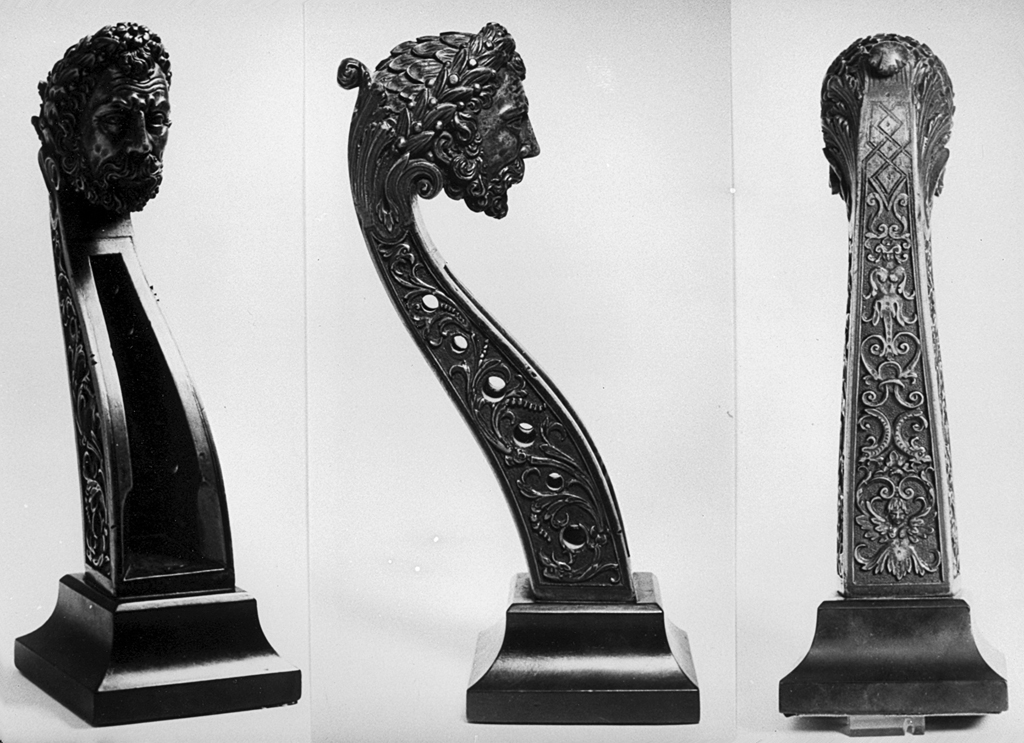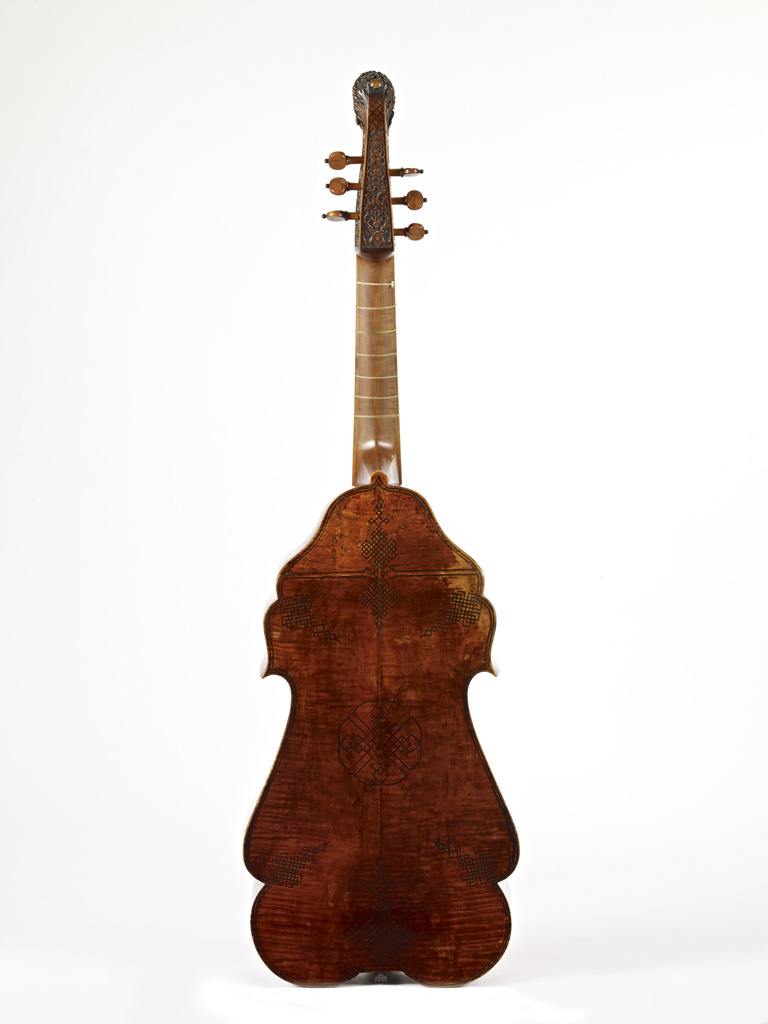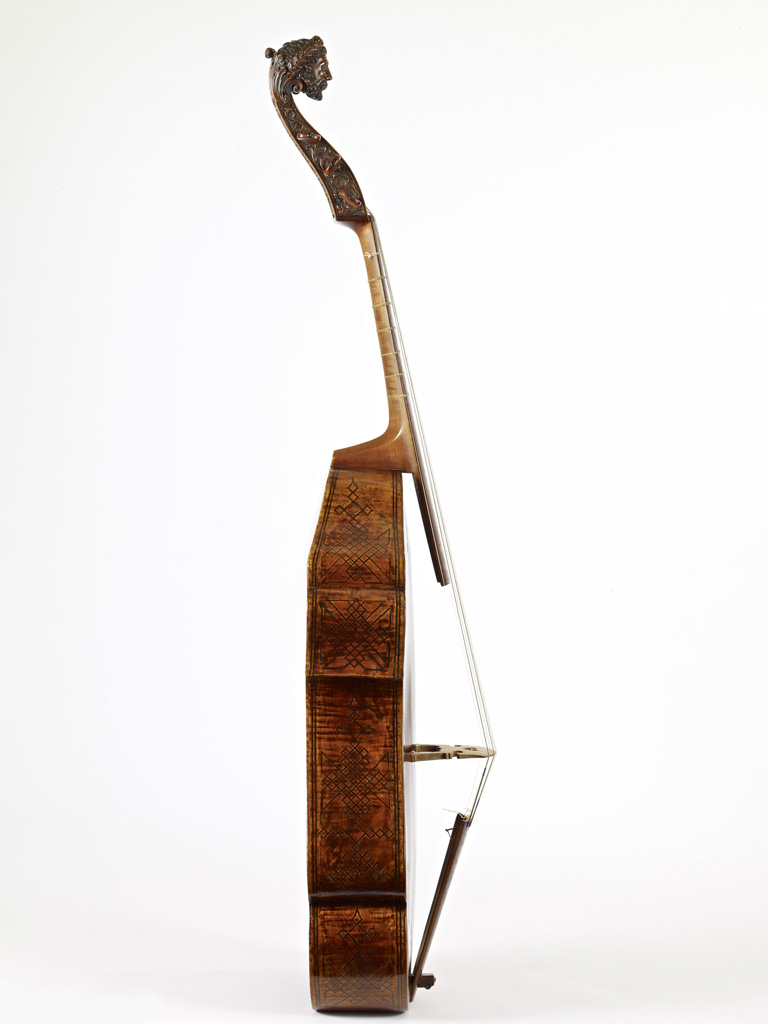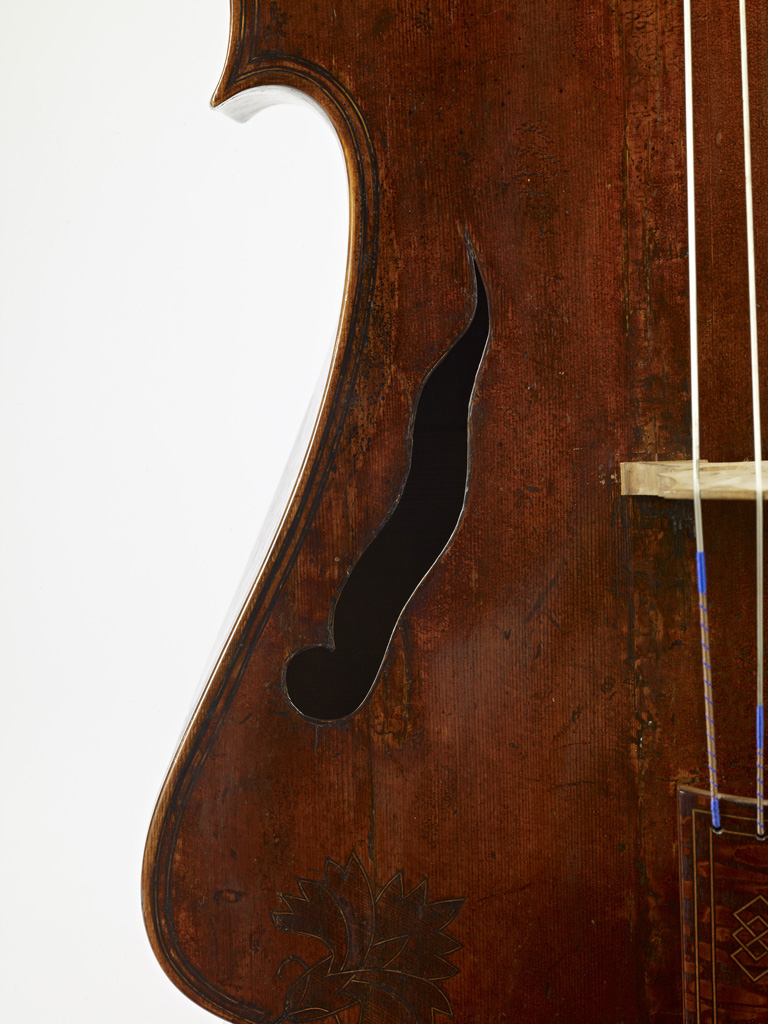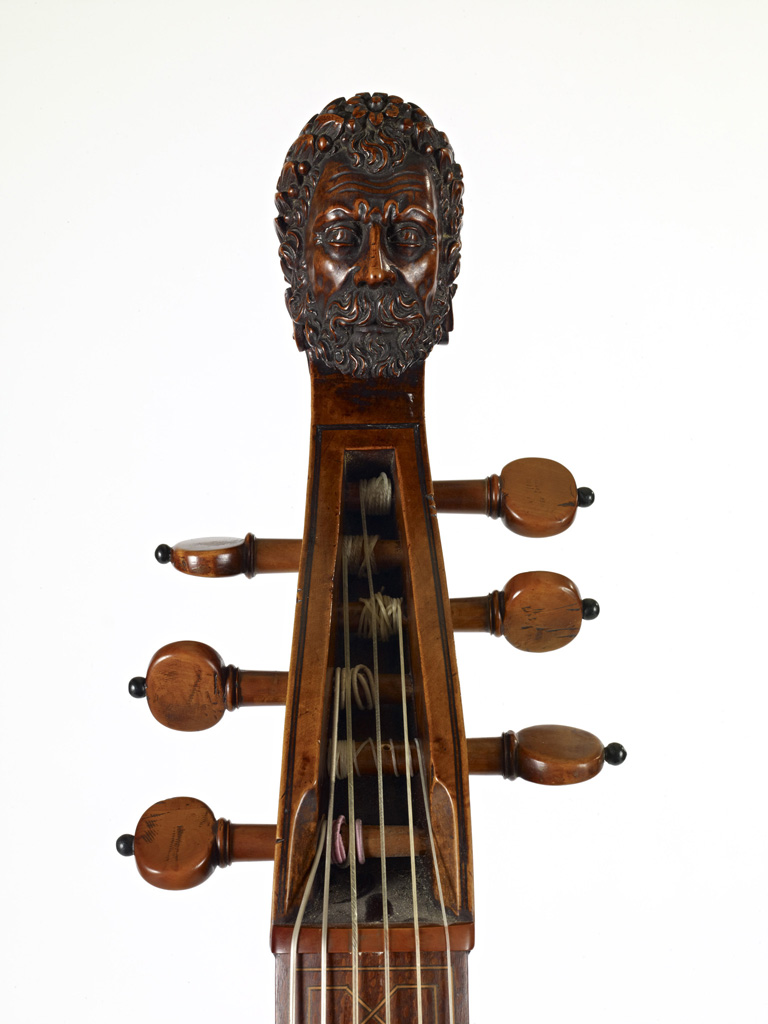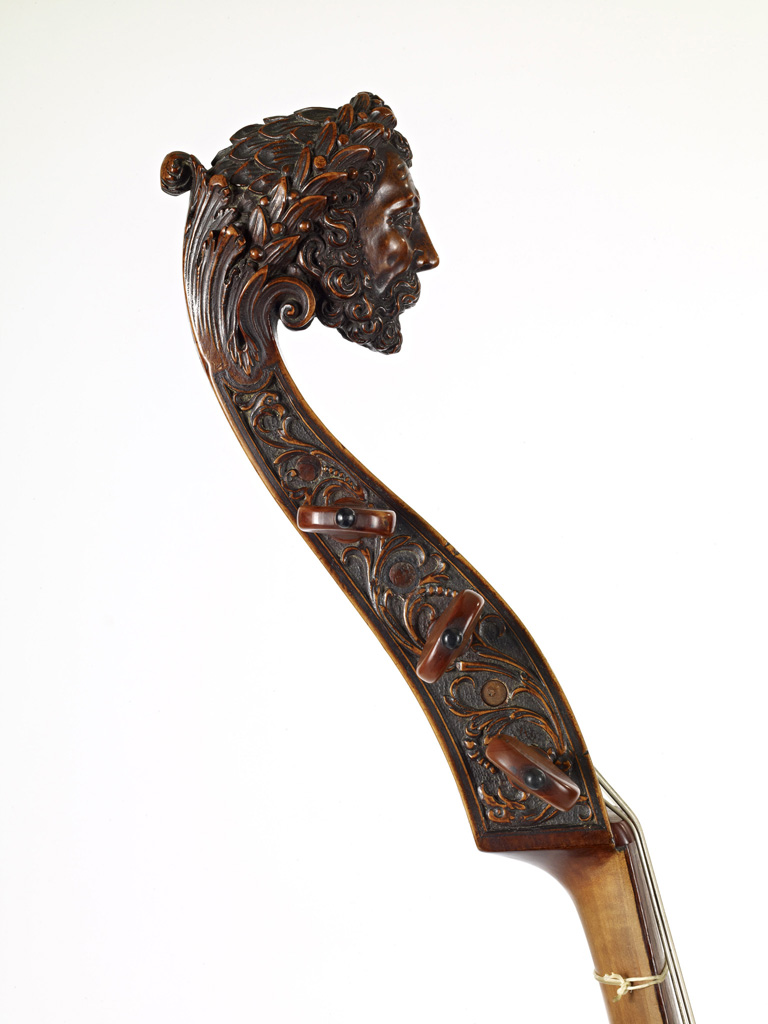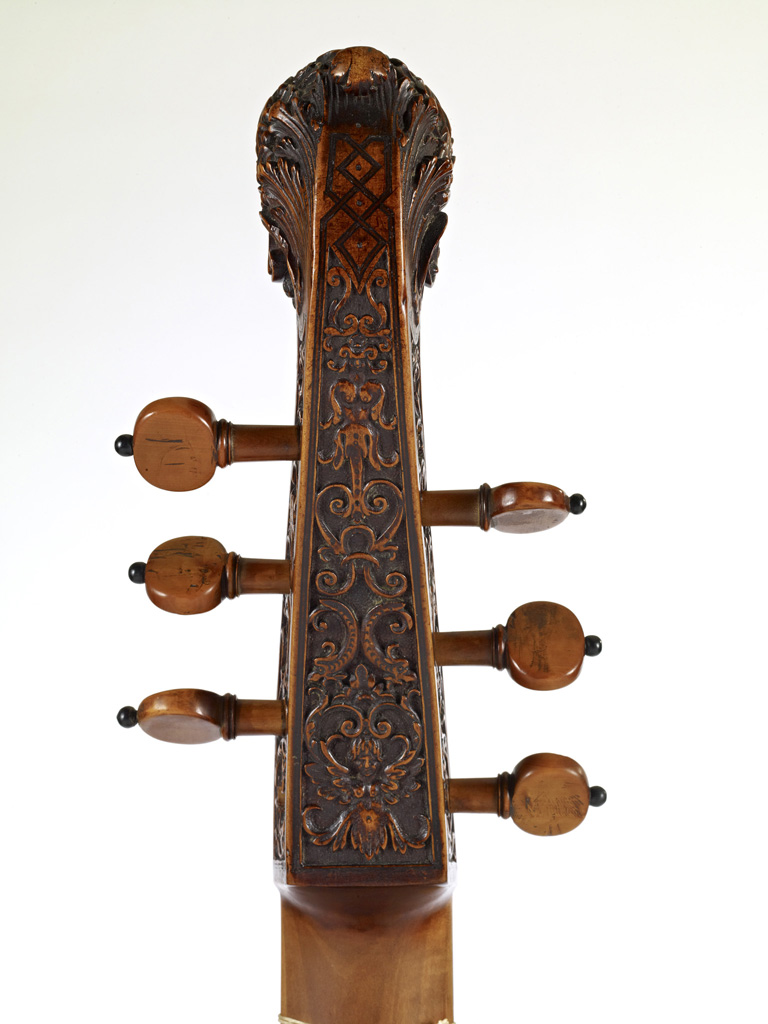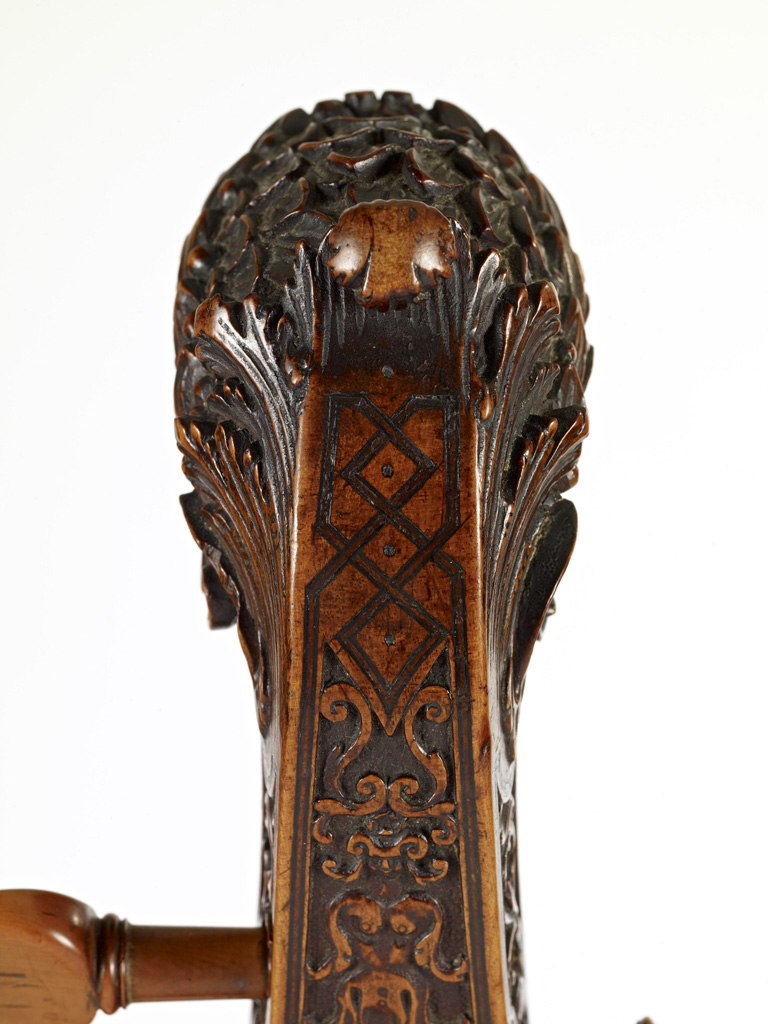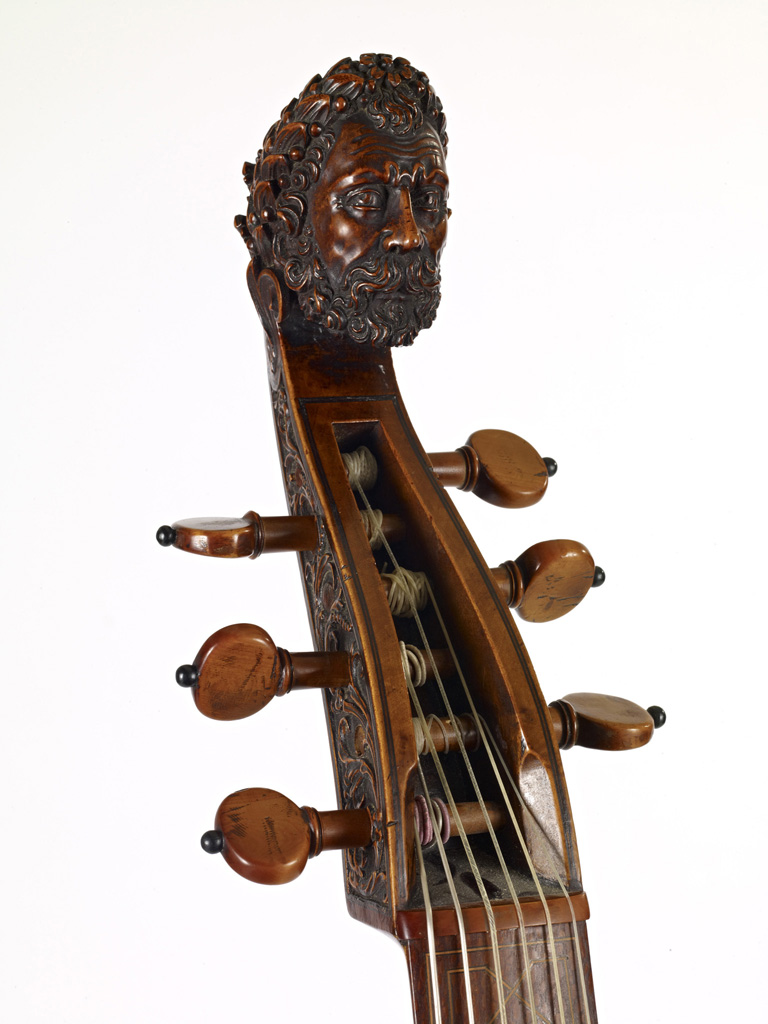Bought from Tony Bingham, London, 1986
The table is made in the typical English manner from seven staves of pine, bent, joined, and carved. The wood is of even grain with 15 to 9 growth rings per cm. The soundholes are flame shaped and edged with black-white-black purfling in the same manner as the instrument of similar outline at the Ashmolean Museum in Oxford, which is also attributed to Rose. There are two rows of black-white-black purfling which, at the incurves in the top and bottom bouts, cross over each other to form two points, one of which rather awkwardly runs on to become the stalk of a stylized tulip flower delineated in a narrower purfling. The ground within the flower is crosshatched with a knife so that the varnish collects in the knife cuts and “colors” the flower. The execution of the design is awkward enough to suggest the flowers were an afterthought, but on the lower bouts at least, where the inner line of purfling rises to become the stalk, the purfling strip appears to be one piece continuing all round the bout, and not a shorter, separate piece added later.
The back is two pieces of maple with a light irregular flame. The double black-white-black purfling, as on the table, crosses over at the incurves, and this time resolves into a complicated knot pattern which is a condensed version of the more open design used at the base of the back. As with the flowers on the table, the way these knots rise from the edge purfling is awkward, again suggesting afterthought, but a careful examination of the strips again reveals a continuous piece running the length of the bout. The same pattern is used pointing up and down the center seam where the edge purfling crosses the body above and below the fold. In the center of the back is a circular geometric figure of unusual design that might be read as a stylized flower – perhaps a rose? The overall effect of these multiple knot patterns is somewhat heavy and unbalanced, especially because the condensed version of the knot is so much denser than the larger version, which retains the same character as the typical English designs on the ribs. The edge purfling unusually rises to a point at the base of the back and at the heel of the neck.
The ribs are of maple with broad, irregular flame more intense than that of the back. There are nine sections, and only the short bottom section is without a geometric purfling pattern set within a double purfled border. The latter runs out into the neck–body joint instead of turning to cross the upper end of the rib as on some English instruments that have such a border. The same designs, with one tiny variation, are used much later in the 17th century by Edward Lewis.
The neck is modern, as are the fingerboard and tailpiece, which are maple with beefwood veneer and appropriate geometric purfling. The head, which may not be original to the instrument, is almost certainly contemporary with it, and is quite magnificent. It represents a bearded man with laurel wreath, and the ornamental relief carvings on the back and sides of the pegbox are in high Italianate-English renaissance style. The whole piece is the twin of the head on a smaller instrument in Hart House, Toronto, also thought to be possibly by Rose. The modern pegs are boxwood with ebony pips.
The hookbar is of a stained wood, pear or maple, and is also carved with Italianate scroll decoration. It may be the work of W.E. Hill and Sons.
The transparent varnish is a rich red-brown on yellow ground.
Body length
66.2 to bottom block
68.5 to edge of bottom bout
Body width
upper bout 32.1
upper corners 33.1
center bout 24.7
lower bout 38.6
Rib height
top block 8.5
upper corners 11.6
lower corners 11.5
bottom block 11.4
String length 70.4

